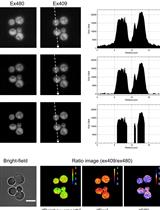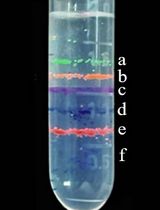- EN - English
- CN - 中文
A Method to Inoculate Millet Grain-Colonized Fusarium pseudograminearum on Wheat to Obtain Reproducible Disease Symptoms
粟粒基质假禾谷镰刀菌接种小麦的标准化方法及其稳定病症获取
发布: 2025年09月20日第15卷第18期 DOI: 10.21769/BioProtoc.5438 浏览次数: 1257
评审: Shweta PanchalAnonymous reviewer(s)
Abstract
Fusarium crown rot (FCR), mainly caused by Fusarium pseudograminearum, is a devastating soil-borne disease of wheat that results in severe yield and quality reduction. FCR is characterized by stem base necrosis and whitehead development. In recent years, FCR has escalated in both incidence and severity, emerging as a critical threat to global wheat production, particularly within key cultivation zones such as China's Huang-Huai-Hai Plain. The development of resistant cultivars is an effective and environmentally sustainable strategy for FCR disease control. However, the lack of standardized and reproducible inoculation protocols has hindered the accurate assessment and screening of disease-resistant wheat germplasms. To address this limitation, we established a robust FCR inoculation system utilizing F. pseudograminearum propagated on a millet grain substrate, facilitating rapid and reliable evaluation of both host resistance and fungal pathogenicity. Laboratory validation demonstrated high infection efficiency and strong reproducibility of this method.
Key features
• Standardized and reproducible greenhouse inoculation protocol for Fusarium crown rot resistance assessment, established in wheat.
• This system enables accurate quantification of F. pseudograminearum pathogenicity and facilitates high-throughput screening of resistant wheat germplasm.
Keywords: Fusarium pseudograminearum (假禾谷镰刀菌)Background
Fusarium crown rot (FCR) is a soil-borne disease caused by multiple Fusarium species, including F. pseudograminearum, F. graminearum, and F. culmorum [1]. Among these, F. pseudograminearum is the predominant causal agent in the Huang-Huai-Hai wheat region of China, a critical area for national wheat production [2]. FCR can infect wheat throughout its entire growth cycle. At the seedling stage, typical symptoms include browning of the leaf sheaths and stem bases, with severe infections leading to chlorosis and seedling death [3]. As plants advance to jointing and heading stages, stem base necrosis intensifies, often accompanied by pink mycelial growth at nodes under high humidity [4]. By maturity, severely infected plants exhibit premature senescence, whiteheads, and grain defects such as shriveled kernels or sterility, collectively leading to significant reductions in both yield and grain quality [5–6].
Currently, breeding resistant cultivars remains the cornerstone for effective management of FCR [7]. Chemical control strategies are constrained by the emergence of fungicide resistance and concerns over environmental contamination, which are also inconsistent with China’s Dual Reduction policy aimed at reducing pesticide and fertilizer use [8]. In this context, biological control has emerged as a promising alternative due to its sustainability and compatibility with ecological agriculture practices [9].
A major bottleneck in FCR research is the lack of reliable phenotyping tools. The terrace method can detect adult plant resistance, but it does not distinguish the very high level of susceptibility observed in durums in the field [8]. In current greenhouse resistance screening methods, glasshouse seedling bioassay is a good predictor of crown rot resistance in adult plants under field conditions, but crown rot severity is assessed 35 days after inoculation [10]. To overcome these limitations, we developed a standardized greenhouse inoculation protocol for FCR by optimizing pathogen preparation and the inoculation method. This system enables accurate quantification of F. pseudograminearum pathogenicity and high-throughput screening of resistant wheat germplasm under controlled environmental conditions.
Materials and reagents
1. Fusarium pseudograminearum strain Fp22-2 (provided by Huiquan Liu lab, College of Plant Protection, Northwest A&F University, Shaanxi, China) [11]
2. Wheat seeds (Triticum aestivum cv. Fielder, Huiquan Liu lab in College of Plant Protection, Northwest A&F University, Shaanxi province, China)
3. Wheat seeds (Xinong 529, Wanquan Ji lab, College of Agronomy, Northwest A&F University, Shaanxi province, China)
4. Millet grains (Beijing Heyatang Food Co., Ltd, catalog number: Gaia Farm 10013579379)
5. Substrate (Pindstrup Mosebrug A/S, Denmark, catalog number: 14013529)
6. Deionized water
7. Potato dextrose agar (PDA) medium (Beijing Aoboxing Bio-tech Company, Aobox®, catalog number: 02-023)
8. Ethanol (Tianjin Fuyu Fine Chemical Co., Ltd, AR 500 mL)
9. Sodium hypochlorite (Shanghai Macklin Biochemical Co., Ltd, catalog number: S828471-500mL)
10. 35 mm Petri dishes (Changde Bickman Biotechnology Co., Ltd, catalog number: B-SLPYM35)
11. 90 mm Petri dishes (Changde Bickman Biotechnology Co., Ltd, catalog number: B-SLPYM90)
12. Conical flasks, 250 mL (Haimen Ruibo Experimental Equipment Company, catalog number: RBSLZXP-250)
13. Black plastic pots (8 cm height × 7 cm diameter)
14. Toothpicks (Yekee, catalog number: Y-9892)
15. Filter paper (Shuangquan, catalog number: 99-202-090)
16. Tweezers (Haimen Chuangxin Experimental Equipment Company, catalog number: CX184-13)
Equipment
1. Automatic autoclave (Sanyo, model: MLS-3780)
2. Analytical balance (Shimadzu Tianping, Japan, model: AUX220)
3. Programmable growth chamber (controlling temperature and humidity) (Percival, model: E-36HO)
4. Digital camera (Nikon, model: D3000)
5. Calibrated ruler (Shanghai M&G Stationery INC, model: ARL96004)
Software and datasets
1. GraphPad Prism 10.0.3 software
Procedure
文章信息
稿件历史记录
提交日期: Jun 13, 2025
接收日期: Aug 7, 2025
在线发布日期: Aug 13, 2025
出版日期: Sep 20, 2025
版权信息
© 2025 The Author(s); This is an open access article under the CC BY-NC license (https://creativecommons.org/licenses/by-nc/4.0/).
如何引用
Tang, Z., Kong, W., Xu, M. and Zhang, X. (2025). A Method to Inoculate Millet Grain-Colonized Fusarium pseudograminearum on Wheat to Obtain Reproducible Disease Symptoms. Bio-protocol 15(18): e5438. DOI: 10.21769/BioProtoc.5438.
分类
植物科学 > 植物免疫 > 病害症状
微生物学 > 体内实验模型 > 真菌
您对这篇实验方法有问题吗?
在此处发布您的问题,我们将邀请本文作者来回答。同时,我们会将您的问题发布到Bio-protocol Exchange,以便寻求社区成员的帮助。
Share
Bluesky
X
Copy link










